

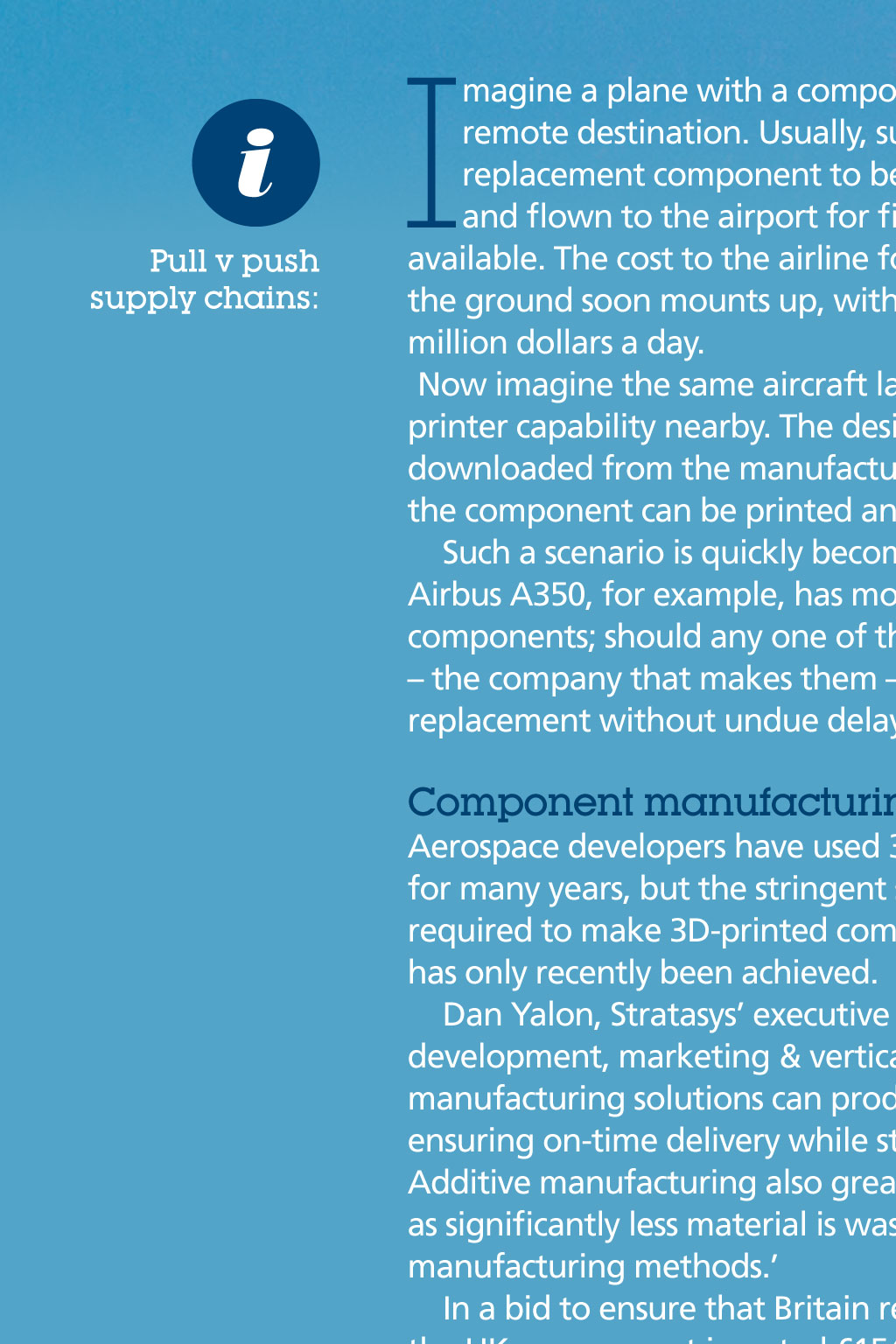
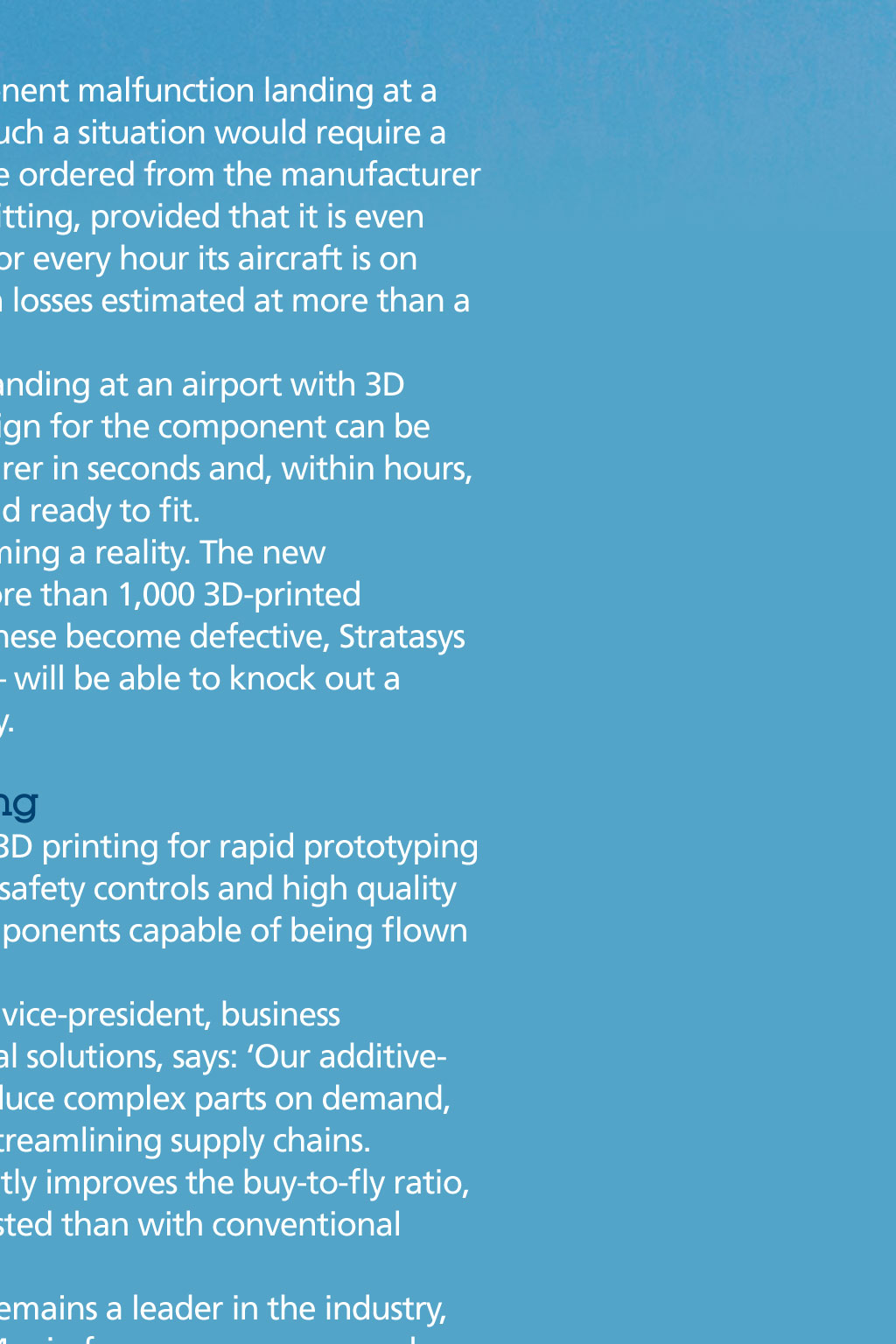
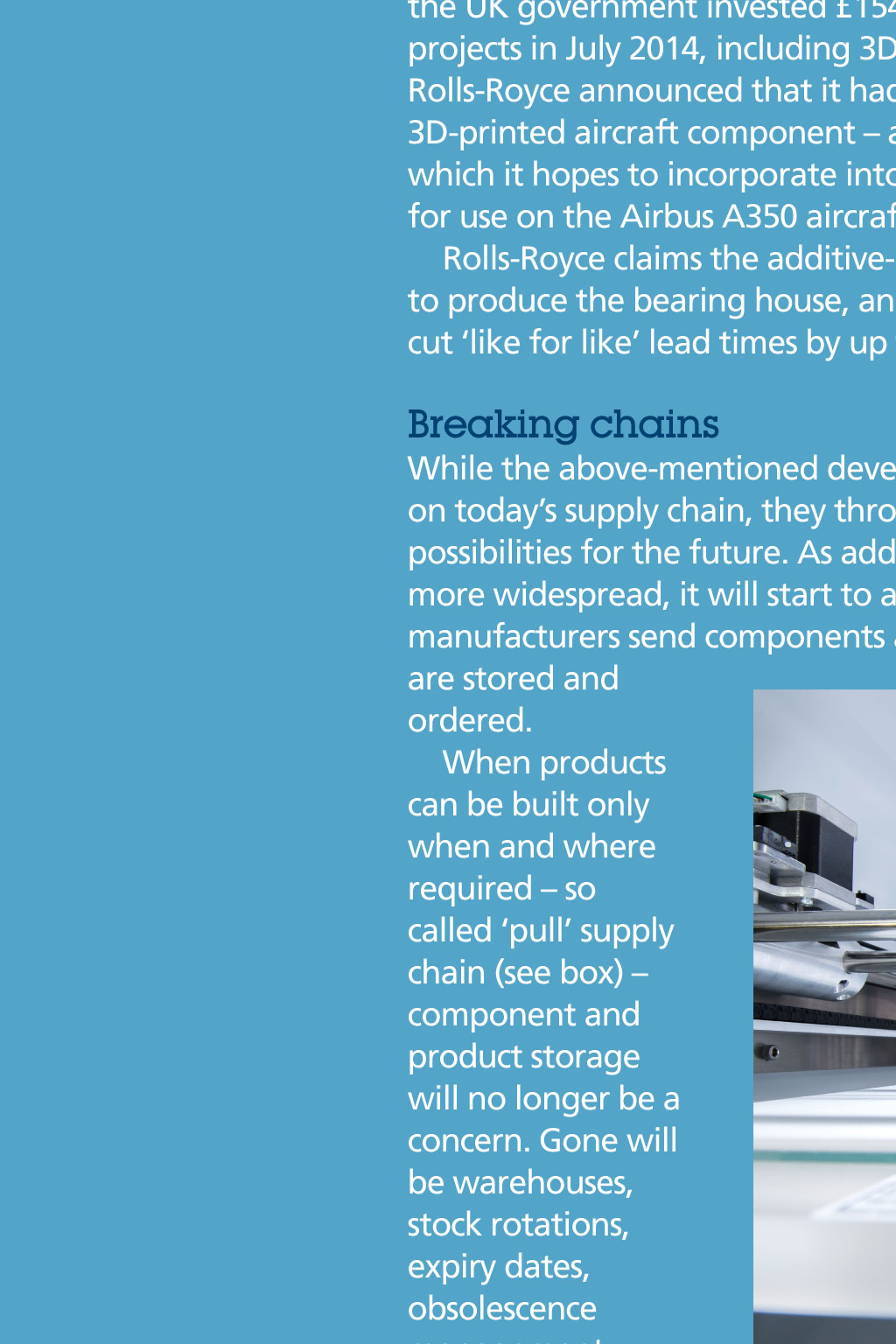
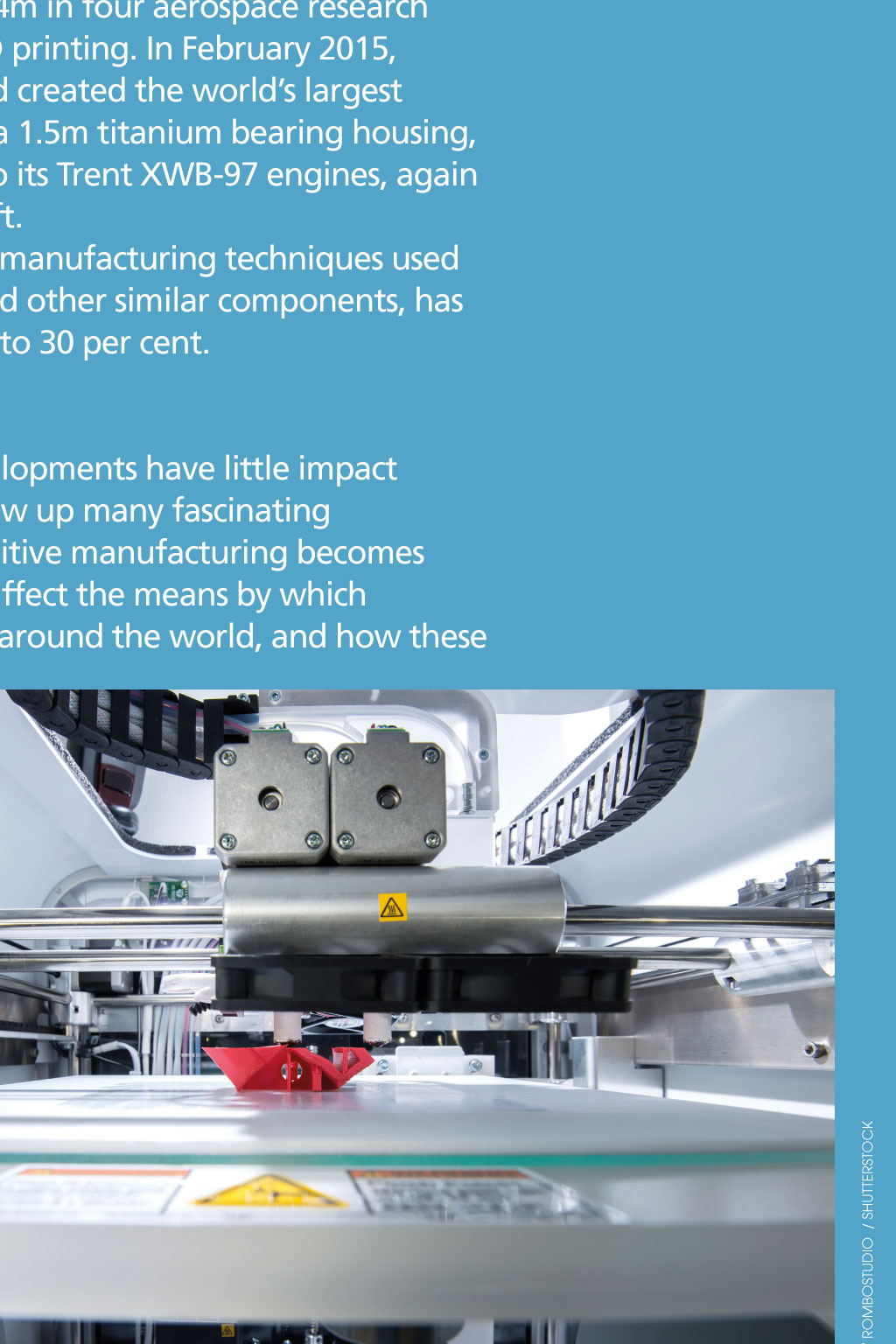
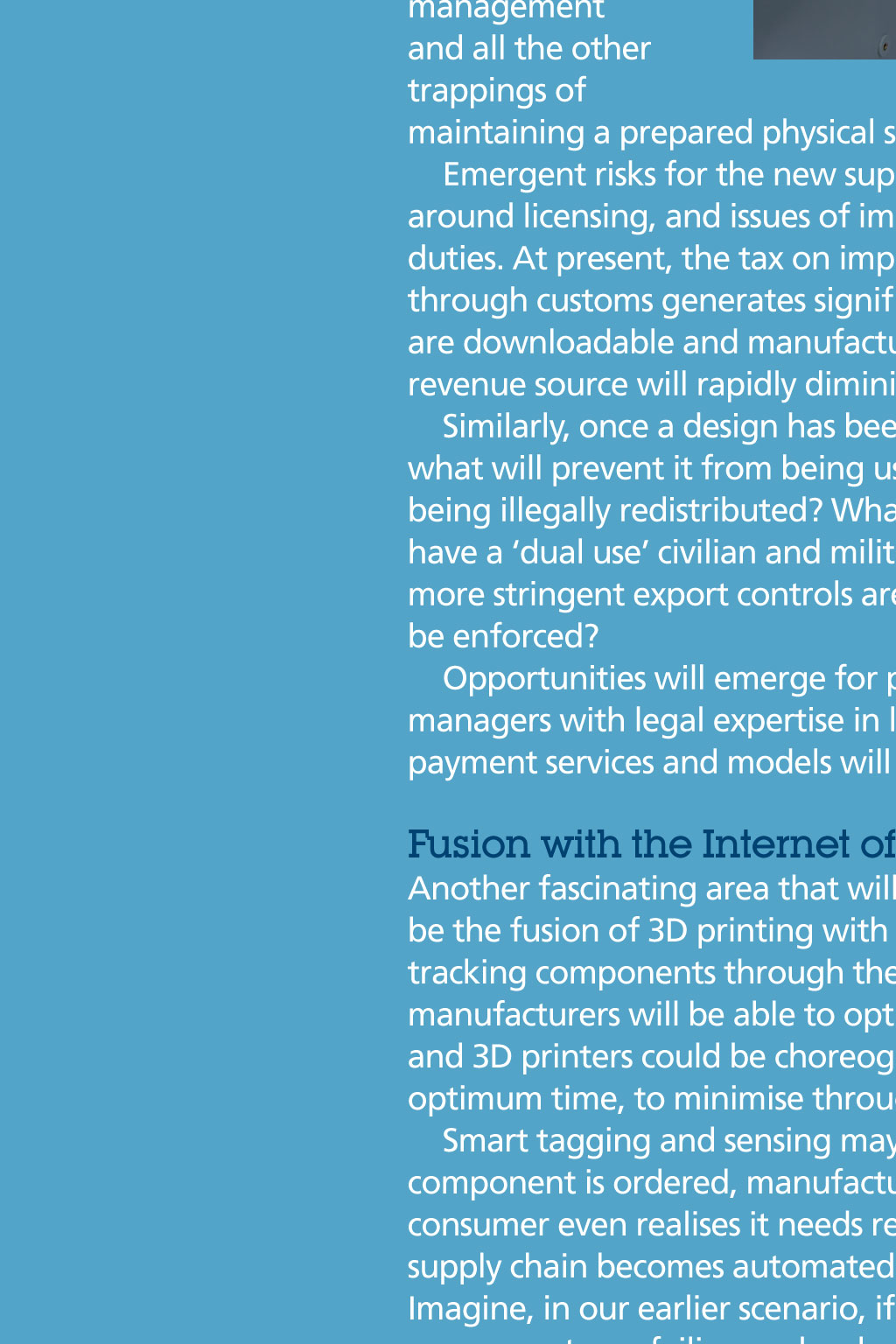
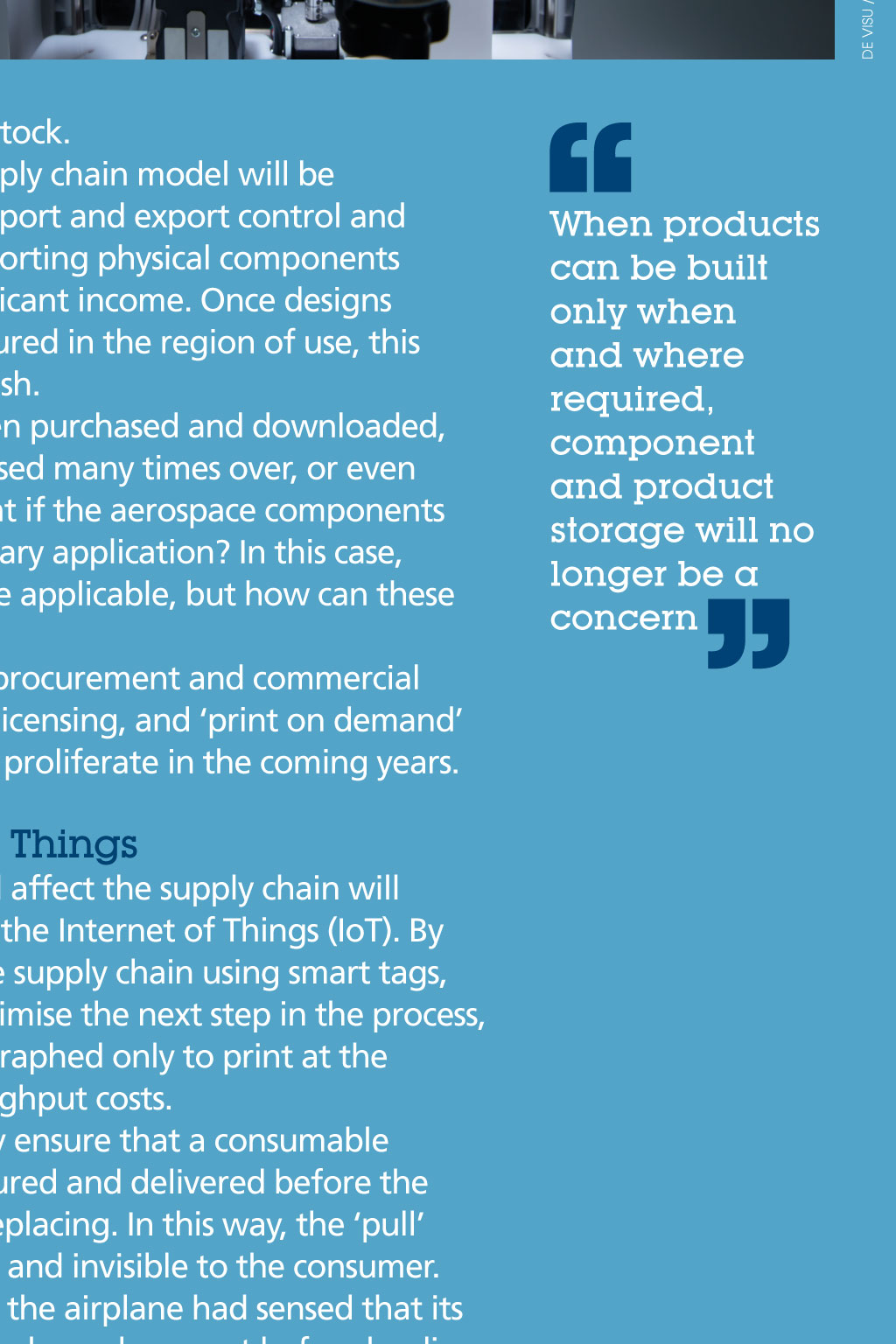
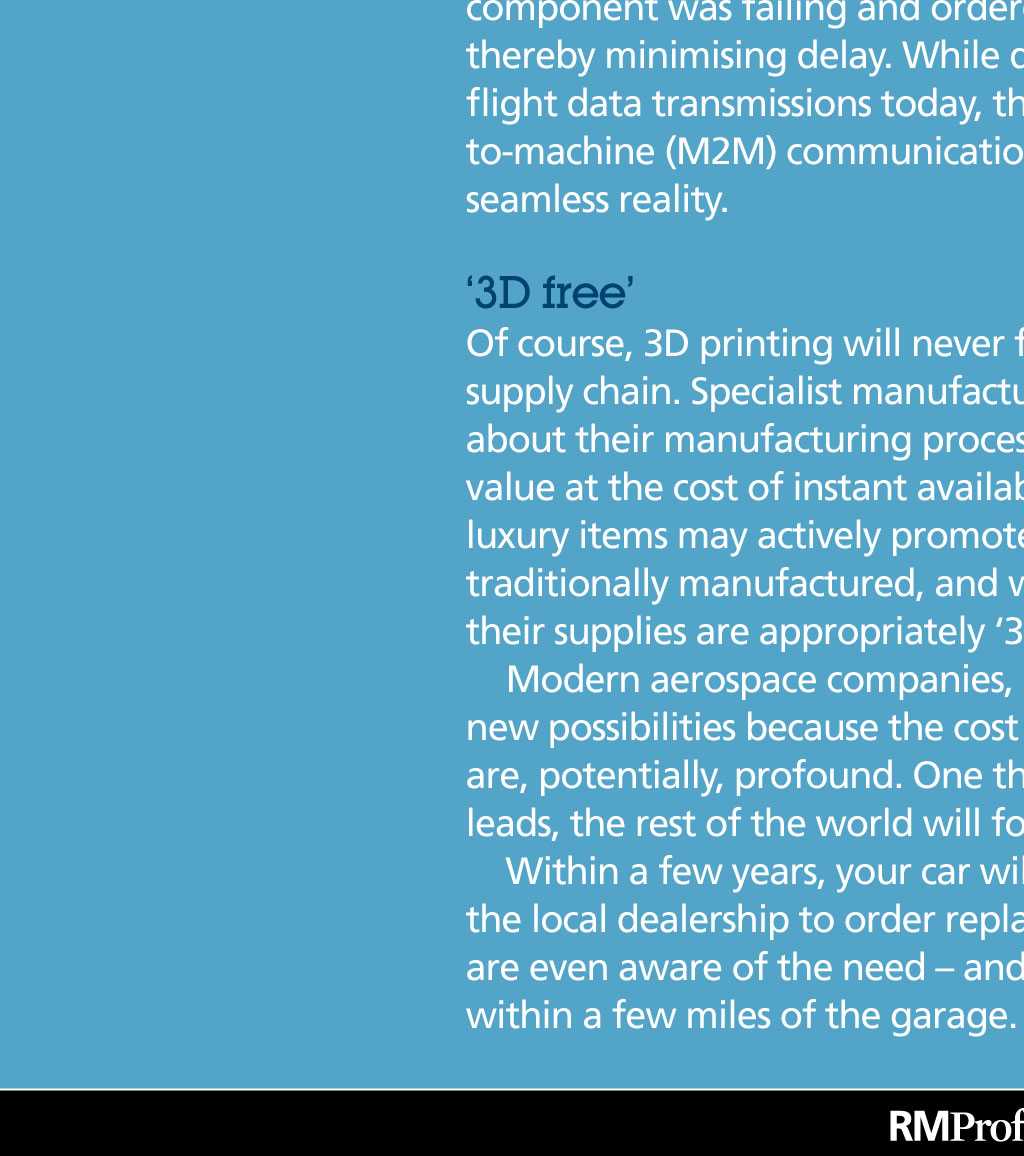
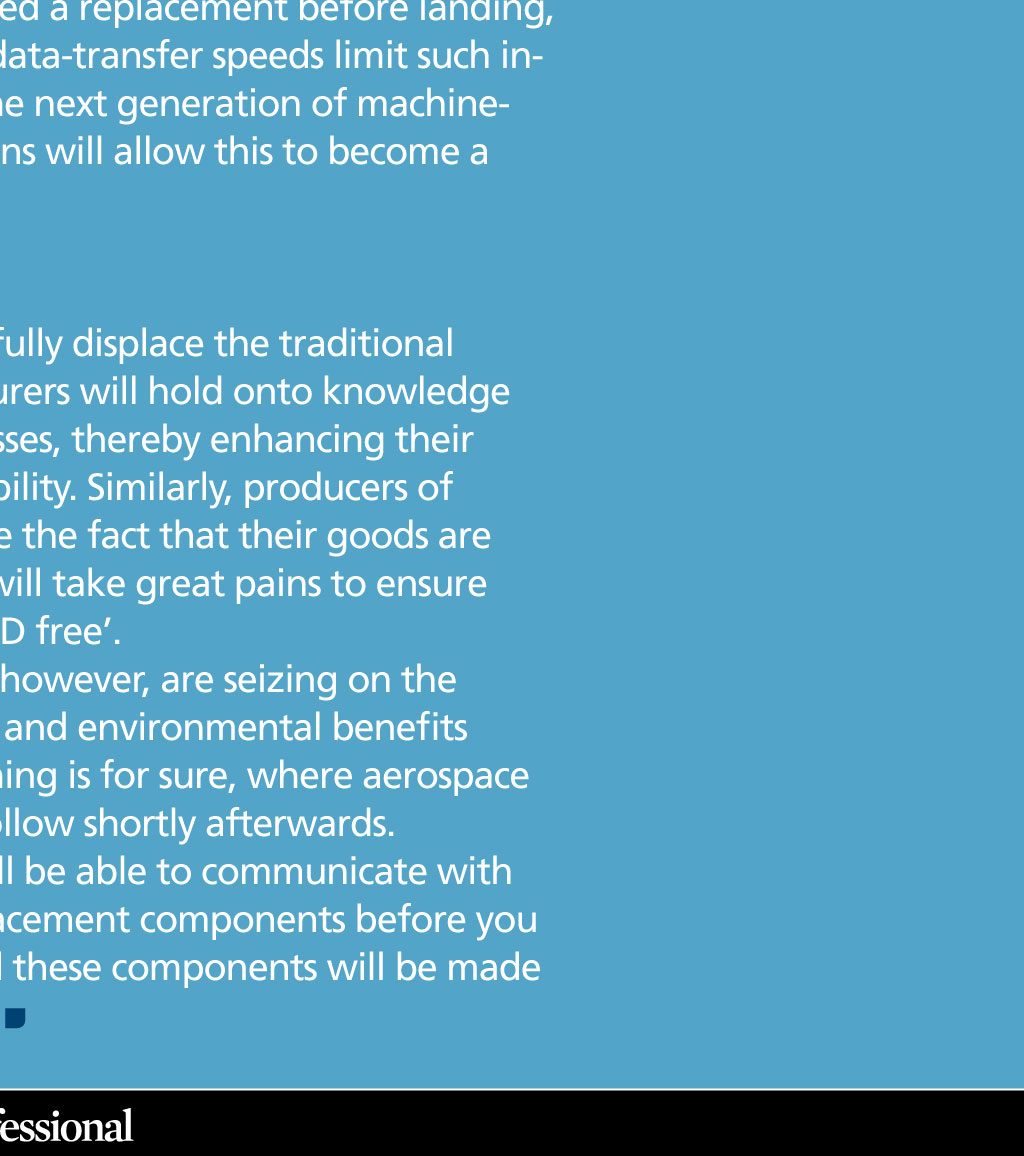










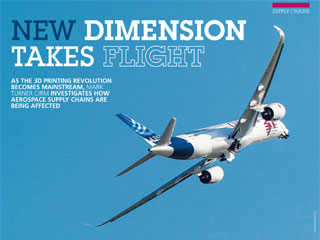
neW DIMENsION TAKeS suppLy ChaIns 3dreAms/shutterstocK AS THE 3D PRInTInG REvOLUTIOn BECOMES MAInSTREAM, MARK TURNER CIRM InvESTIGATES HOW AEROSPACE SUPPLy CHAInS ARE BEInG AffECTED Pull v push supply chains: I magine a plane with a component malfunction landing at a remote destination. Usually, such a situation would require a replacement component to be ordered from the manufacturer and flown to the airport for fitting, provided that it is even available. The cost to the airline for every hour itsaircraft is on the ground soon mounts up, withlosses estimated at more than a million dollars a day. Now imagine the same aircraft landing at an airport with 3D printer capability nearby. The design for the component can be downloaded from the manufacturer in seconds and, within hours, the component can be printed and ready to fit. Such a scenario is quickly becoming a reality. The new Airbus A350, for example, has more than 1,000 3D-printed components; should any one of these become defective, Stratasys the company that makes them will be able to knock out a replacement without undue delay. component manufacturing Aerospace developers have used 3D printing for rapid prototyping for many years, but the stringent safety controls and high quality required to make 3D-printed components capable of being flown has only recently been achieved. Dan Yalon, Stratasys executive vice-president, business development, marketing & vertical solutions, says: Our additivemanufacturing solutions can produce complex parts on demand, ensuring on-time delivery while streamlining supply chains. Additive manufacturing also greatly improves the buy-to-fly ratio, as significantly less material is wasted than with conventional manufacturing methods. In a bid to ensure that Britain remains a leader in the industry, the UK government invested 154m in four aerospace research projects in July 2014, including 3D printing. In February 2015, Rolls-Royce announced that it had created the worlds largest 3D-printed aircraft component a 1.5m titanium bearing housing, which it hopes to incorporate into its Trent XWB-97 engines, again for use on the Airbus A350 aircraft. Rolls-Royce claims the additive-manufacturing techniques used to produce the bearing house, and other similar components, has cut like for like lead times by up to 30 per cent. While the above-mentioned developments have little impact on todays supply chain, they throw up many fascinating possibilities for the future. As additive manufacturing becomes more widespread, it will start to affect the means by which manufacturers send components around the world, and how these are stored and ordered. When products can be built only when and where required so called pull supply chain (see box) component and product storage will no longer be a concern. Gone will be warehouses, stockrotations, expiry dates, obsolescence management and all the other trappings of maintaining a prepared physical stock. Emergent risks for the new supply chain model will be around licensing, and issues of import and export control and duties. At present, the tax on importing physical components through customs generates significant income. Once designs are downloadable and manufactured in the region of use, this revenue source will rapidly diminish. Similarly, once a design has been purchased and downloaded, what will prevent it from being used many times over, or even being illegally redistributed? What if the aerospace components have a dual use civilian and military application? In this case, more stringent export controls are applicable, but how can these be enforced? Opportunities will emerge for procurement and commercial managers with legal expertise in licensing, and print on demand payment services and models will proliferate in the coming years. Fusion with the Internet of Things Another fascinating area that will affect the supply chain will be the fusion of 3D printing with the Internet of Things (IoT). By tracking components through the supply chain using smart tags, manufacturers will be able to optimise the next step in the process, and 3D printers could be choreographed only to print at the optimum time, to minimise throughput costs. Smart tagging and sensing may ensure that a consumable component is ordered, manufactured and delivered before the consumer even realises it needs replacing. In this way, the pull supply chain becomes automated and invisible to the consumer. Imagine, in our earlier scenario, if the airplane had sensed that its component was failing and ordered a replacement before landing, thereby minimising delay. While data-transfer speeds limit such inflight data transmissions today, the next generation of machineto-machine (M2M) communications will allow this to become a seamless reality. 3D free Of course, 3D printing will never fully displace the traditional supply chain. Specialist manufacturers will hold onto knowledge about their manufacturing processes, thereby enhancing their value at the cost of instant availability. Similarly, producers of luxury items may actively promote the fact that their goods are traditionally manufactured, and will take great pains to ensure their supplies are appropriately 3D free. Modern aerospace companies, however, are seizing on the new possibilities because the cost and environmental benefits are, potentially, profound. One thing is for sure, where aerospace leads, the rest of the world will follow shortly afterwards. Within a few years, your car will be able to communicate with the local dealership to order replacement components before you are even aware of the need and these components will be made within a few miles of the garage. Pull v push supply chains: Pull v push supply chains: In a traditional push supply chain, stock is speculatively manufactured and stored, in the expectation that it will eventually be sold to customers. With the introduction of 3D printing and the Internet of Things (IoT), however, customers can now demand a product that is created only when required. In this way, a pull supply chain emerges. This reduces work in progress, stock in transit and obsolescence of existing stock. de Visu / rombostudio / shutterstocK Breaking chains When products can be built only when and where required, component and product storage will no longer be a concern